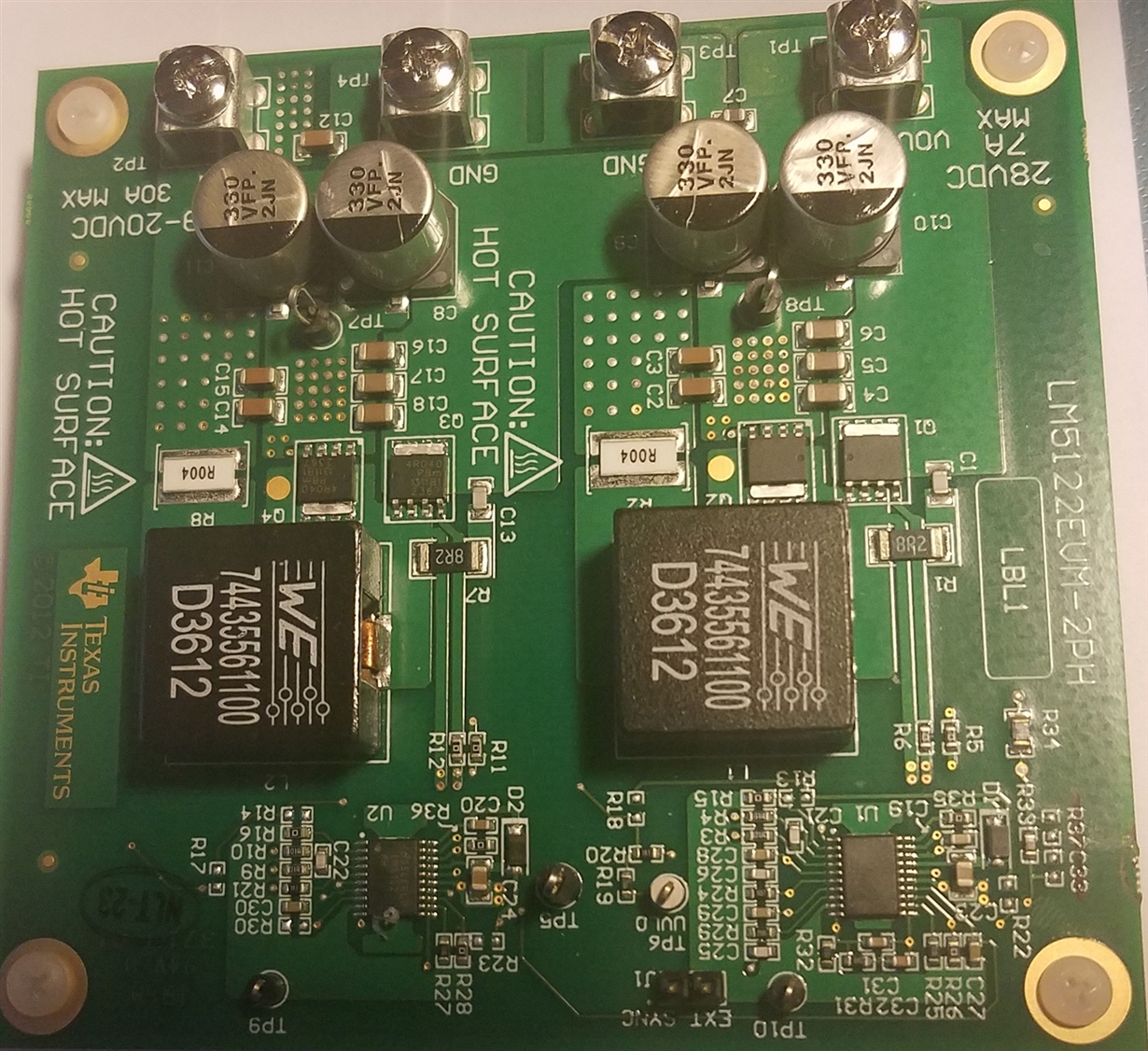hi, bought eval lm5122evm-2ph. 2 phases, nice board.
very confusing about the many 0 ohm resistors. pads are on the board, some resistors are on the board, all resistors are in schematic, but not on BOM. strange.
I take that back, that is confusing. R22, R23, R30, R37, R18 0 ohm resistors are not in BOM, but are in schematic, all have pads (??), and some populated on board.
same issue with missing D3 diode and C33 cap.
normally, I don't care about errors in docs. but designing my own LM5122 2PH board is difficult. don't know if a part should be included or not. can someone fix erros asap?
I manually laid out my pcb this weekend, then saw 10-16 parts are zero ohms. that's huuuuge. I'm not putting 0 ohm resistors down on my pcb. what a waste of time, I should have caught that.
very alarming, is that populated C20 and R36 are reversed on the pcb. this means the BST cap is not directly tied to BST pin--cap goes thru R36. what is that all about? don't say R36 is 0 ohms, what if a user changes the resistor--then all blows up?
more alarming is:
1. the STRONG mention of having Rg resistors for gate drive--necessary says the world, and says TI, ONsemi, etc. but these on the board are all 0 ohms!! explain!
2. mosfet gate pins MUST BE VERY CLOSE TO DRIVE OUTPUT PINS! but this eval has 1.3" long traces. way too long. when I design a board, my mosfet gate pins are about 2-4mm away.
now that being said, when I have 2-4mm between driver and gate pin, do I need any Rg resistor? I am using TI mosfets with 1.5 ohm internal Rg. so adding external 1 ohm resistor, more than doubles time on & off, according to simulation. please, only true honest-to-God experts replies.


